Kyu-Han Kim
Partial Weight Adaptation for Robust DNN Inference
Mar 13, 2020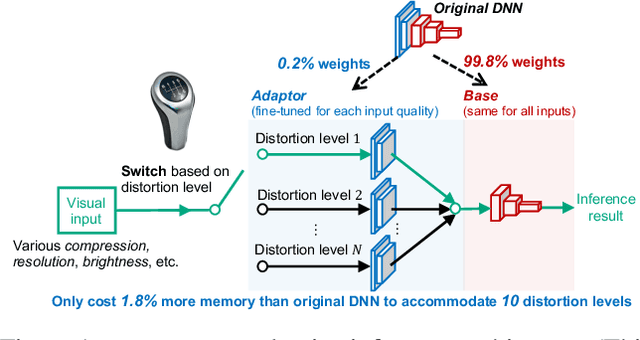
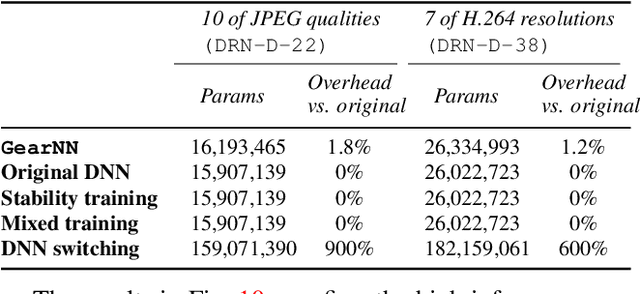
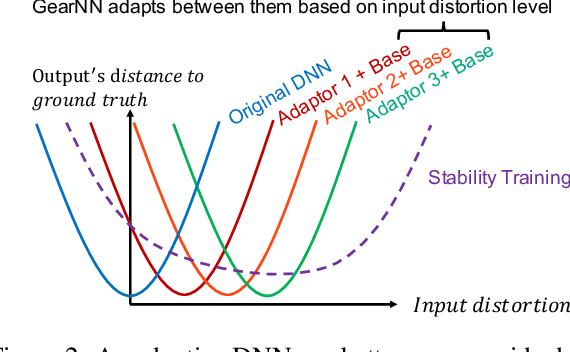
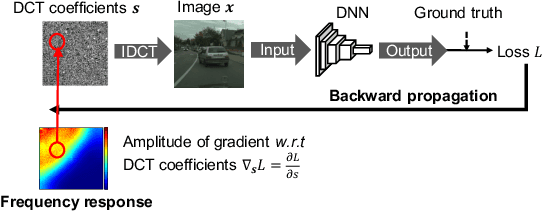
Abstract:Mainstream video analytics uses a pre-trained DNN model with an assumption that inference input and training data follow the same probability distribution. However, this assumption does not always hold in the wild: autonomous vehicles may capture video with varying brightness; unstable wireless bandwidth calls for adaptive bitrate streaming of video; and, inference servers may serve inputs from heterogeneous IoT devices/cameras. In such situations, the level of input distortion changes rapidly, thus reshaping the probability distribution of the input. We present GearNN, an adaptive inference architecture that accommodates heterogeneous DNN inputs. GearNN employs an optimization algorithm to identify a small set of "distortion-sensitive" DNN parameters, given a memory budget. Based on the distortion level of the input, GearNN then adapts only the distortion-sensitive parameters, while reusing the rest of constant parameters across all input qualities. In our evaluation of DNN inference with dynamic input distortions, GearNN improves the accuracy (mIoU) by an average of 18.12% over a DNN trained with the undistorted dataset and 4.84% over stability training from Google, with only 1.8% extra memory overhead.
Grab: Fast and Accurate Sensor Processing for Cashier-Free Shopping
Jan 04, 2020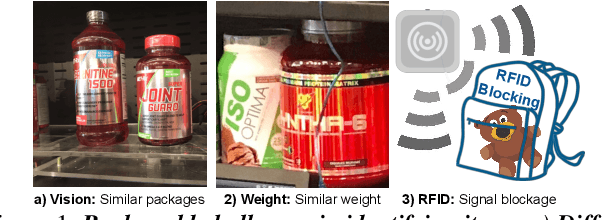
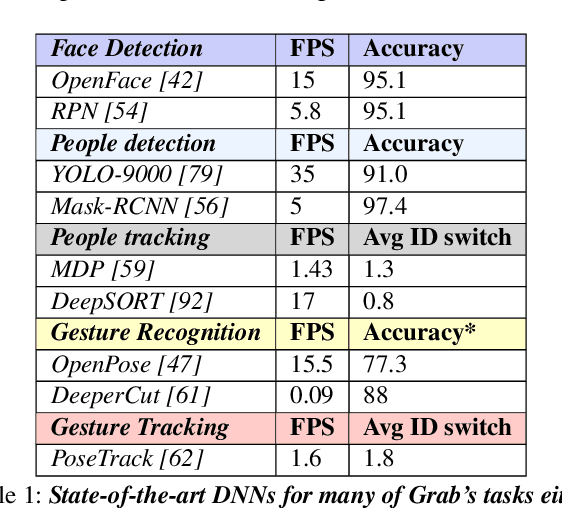
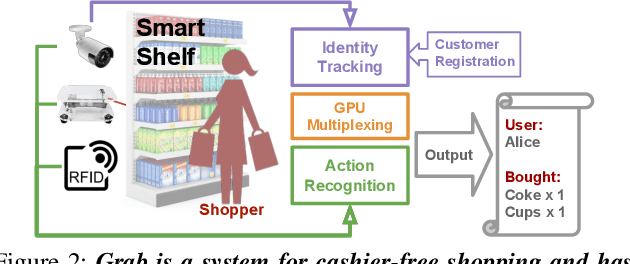
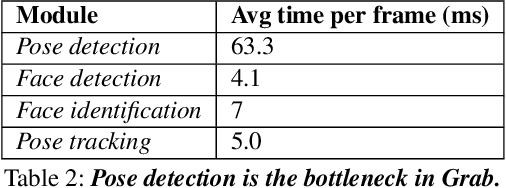
Abstract:Cashier-free shopping systems like Amazon Go improve shopping experience, but can require significant store redesign. In this paper, we propose Grab, a practical system that leverages existing infrastructure and devices to enable cashier-free shopping. Grab needs to accurately identify and track customers, and associate each shopper with items he or she retrieves from shelves. To do this, it uses a keypoint-based pose tracker as a building block for identification and tracking, develops robust feature-based face trackers, and algorithms for associating and tracking arm movements. It also uses a probabilistic framework to fuse readings from camera, weight and RFID sensors in order to accurately assess which shopper picks up which item. In experiments from a pilot deployment in a retail store, Grab can achieve over 90% precision and recall even when 40% of shopping actions are designed to confuse the system. Moreover, Grab has optimizations that help reduce investment in computing infrastructure four-fold.
 Add to Chrome
Add to Chrome Add to Firefox
Add to Firefox Add to Edge
Add to Edge